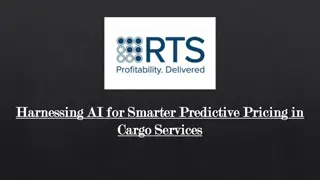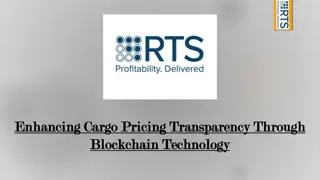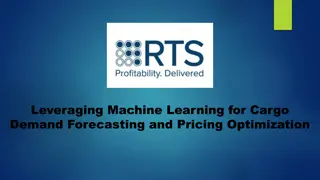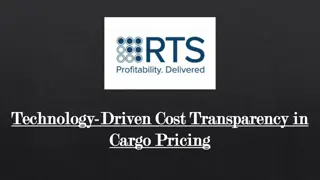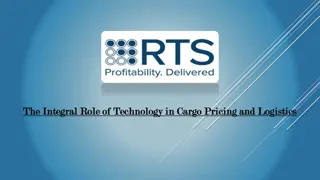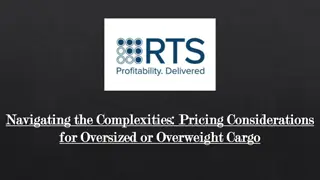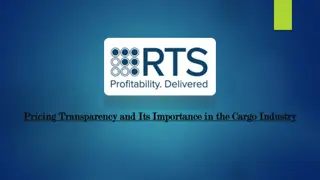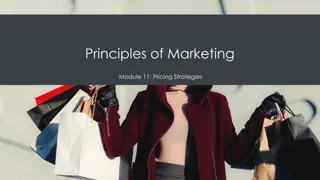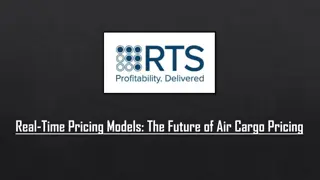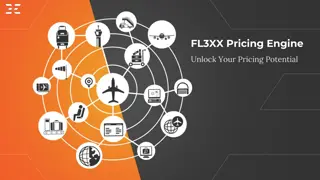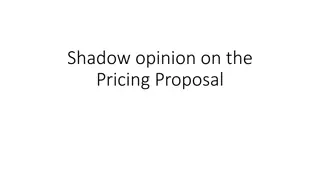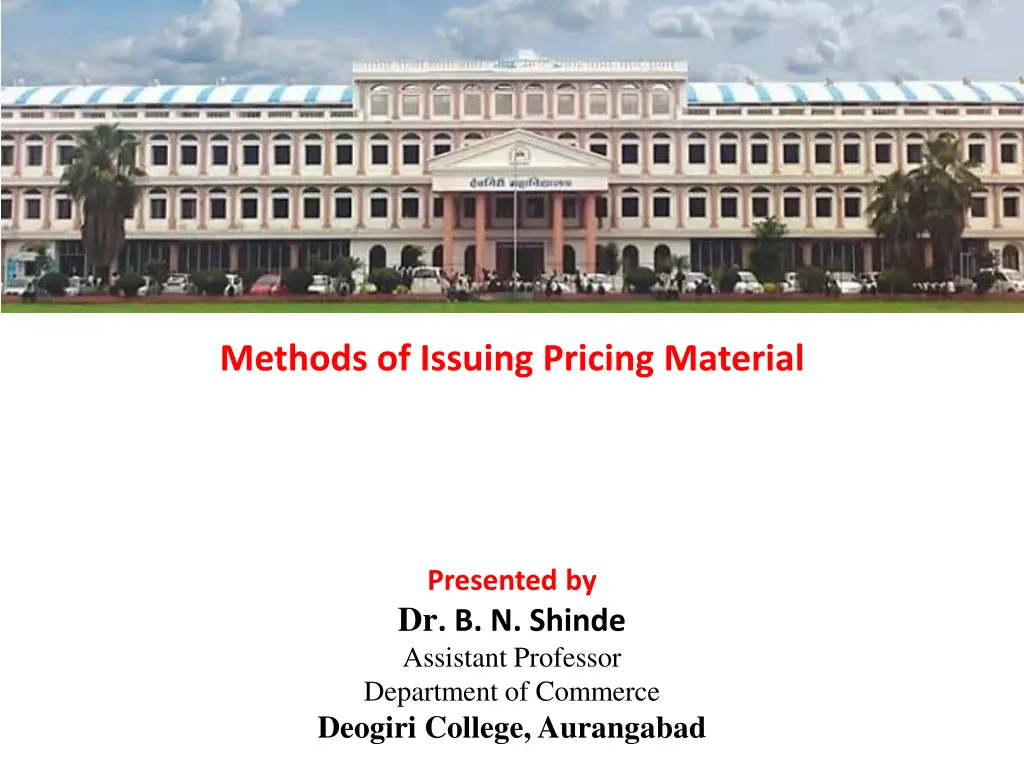
Methods of Issuing Pricing Material by Dr. B. N. Shinde Assistant Professor
Learn about various methods of issuing and pricing material as presented by Dr. B. N. Shinde, Assistant Professor at Deogiri College, Aurangabad. Explore key techniques such as FIFO, LIFO, weighted average cost, and more for effective material management.
Download Presentation

Please find below an Image/Link to download the presentation.
The content on the website is provided AS IS for your information and personal use only. It may not be sold, licensed, or shared on other websites without obtaining consent from the author. If you encounter any issues during the download, it is possible that the publisher has removed the file from their server.
You are allowed to download the files provided on this website for personal or commercial use, subject to the condition that they are used lawfully. All files are the property of their respective owners.
The content on the website is provided AS IS for your information and personal use only. It may not be sold, licensed, or shared on other websites without obtaining consent from the author.
E N D
Presentation Transcript
Methods of Issuing Pricing Material Presented by Dr. B. N. Shinde Assistant Professor Department of Commerce Deogiri College, Aurangabad
Date : 21/10/20 : 21- 62 Methods of Issuing Pricing Material The important methods followed in pricing of issue of materials are:- 1. Actual Cost Method 2. First-In First-Out (FIFO) Method 3. Last-In First-Out (LIFO) Method 4. Highest-in First-Out (HIFO) Method 5. Simple Average Cost Method
6. Weighted Average Cost Method 7. Periodic Average Cost Method 8. Standard Cost Method 9. Replacement Cost Method 10. Next in First Out (NIFO) Method 11. Base Stock Method.
Continue.. 1. First-In First-Out (FIFO) Method: CIMA defines FIFO as a method of pricing the issue of material using, the purchase price of the oldest unit in the stock . Under this method materials are issued out of stock in the order in which they were first received into stock. It is assumed that the first material to come into stores will be the first material to be used. Working : 05 march received 200 units @12 per units 6 march received 100 units @ Rs. 7 per units
Continue.. 2. Last-In First-Out (LIFO) Method: Under this method most recent purchase will be the first to be issued. The issues are priced out at the most recent batch received and continue to be charged until a new batch received is arrived into stock. It is a method of pricing the issue of material using the purchase price of the latest unit in the stock. : 05 march received 200 units @12 per units 6 march received 100 units @ Rs. 7 per units
Continue.. 3. Simple Average Cost Method: Under this method all the materials received are merged into existing stock of materials, their identity being lost. The simple average price is calculated without any regard to the quantities involved. The simple average cost is arrived at by adding the different prices paid during the period for the batches purchased by dividing the number of batches. For example, three batches of materials received at Rs. 10, Rs. 12 and Rs. 14 per unit respectively. : 05 march received 200 units @12 per units 6 march received 100 units @ Rs. 7 per units
Continue.. 4. Weighted Average Cost Method: It is a perpetual weighted average system where the issue price is recalculated every time after each receipt taking into consideration both the total quantities and total cost while calculating weighted average price. For example, three batches of material received in quantities of 1,000 units @ Rs. 15, 1,300 units @ Rs. 16 and 800 units @ Rs. 14.
Continue.. Solution (1,000 units x Rs. 15) + (1,300 units x Rs. 16) + (800 units x Rs. 14)/1,000 units + 1,300 units + 800 units = Rs. 15,000 + Rs. 20,800 + Rs. 11,200/3,100 units = Rs. 47,000/3,100 units = Rs. 15.16 per unit This method tends to smooth out the fluctuations in price and reduces the number of calculations to be made, as each issue is charged at the same price until a fresh batch of material is received.

